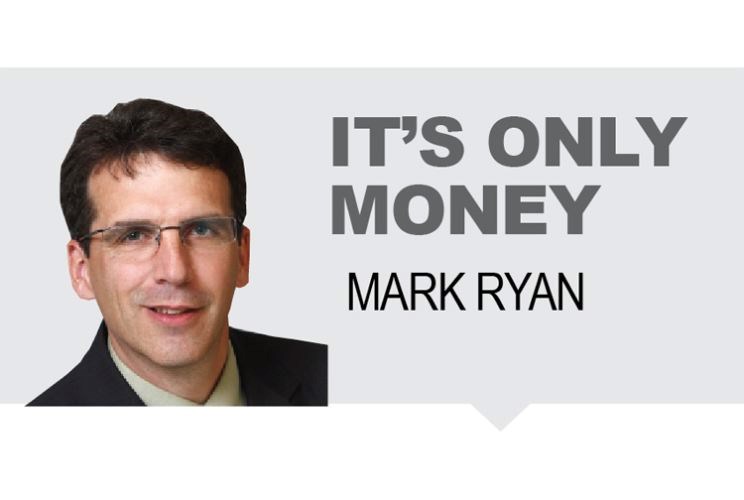Tempting as it is to spend your tax refund on a vacation, a home renovation, or a free-poutine-for-everyone-street-dance party, investing it long-term will pay off nicely, especially if you are younger.
As any rudimentary financial software, or Grade 8 math teacher will attest, the compounding effect of an early-life savings plan is astonishing.
There are other good things to do.
Another is implement strategies in your financial plan, if you have one (hint: you should have one).
For example, you could use the refund to:
Prepare your will or power of attorney.
Set up your emergency fund.
Put adequate disability or life insurance in place.
Contribute to an RRSP, RESP or a TFSA.
My personal favourite - pay down debt.
Most people understand the benefits of saving but some of us have a bit of a tortured relationship with death, math - and insurance.
Here's the thing. What is your most valuable financial asset? Your house? Your RRSP? Your Wayne Gretzky rookie card?
If you are under 55, probably not. Add up your expected average annual income over the lifespan of your employment span of 35 or 40 years (say $75,000 x 40 years = $3,000,000). That's already a huge asset, without being grossed up for inflation.
So insure it, especially if you have a family relying on you. And not only your life, but insure your health (with disability insurance).
If you plan to help your children or grandchildren with their education, you could use your tax refund to contribute to a Registered Education Savings Plan (RESP). Note that the first $2,500 of an annual RESP contribution attracts a federal government grant of $500 (that's a 20 per cent return. Just do it). If you are behind on this strategy (which is designed to accumulate annually) you can double-up your annual contributions, which will double up the annual grant until you are caught up. Don't wait too long. Once the youngest in your family plan turns 17, the annual grants dry up.
Also, reduce non-tax-deductible debt.
First, slap yourself in the face for buying that outrageously-expensive deck furniture set last spring, then pay down your outstanding consumer debt, beginning with amounts subject to a higher interest rate.
Most debt interest is not tax-deductible, but some is. Generally, it has to be clear that the loans were expressly provided to fund either investments or a business in order for its interest to be tax-deductible.
You can sometimes do a little juggling, but do it under supervision of a professional accountant.
For the record, I discourage my clients from diving in to a leveraged investment portfolio, motivated by a tax rebate, its tax-deductible interest, and a chubbier, debt-laden portfolio. Yes, it's a perfectly legal and legitimate investment strategy, but the sexy loan portfolio is usually outweighed by the dark circles under your eyes, which isn't attractive unless you are a gothic punk rock star, or a pouty teenage YouTube sensation, which you aren't. A good night's rest is precious.
A much cooler idea is the spousal loan strategy, if you are in the right income bracket. That's another whole article of its own, coming soon.
If you don't have high-interest non-tax-deductible debt, consider contributing to an RRSP or a non-registered investment account. The choice between the RRSP or non-registered account depends on several financial assumptions. Here are a couple of suggestions that may help:
If you expect your marginal tax rate in retirement to be the same or lower than your marginal tax rate today, consider contributing to your RRSP.
Securities that produce Canadian source dividends and capital gains are usually part of a portfolio mix, often substantially. Their tax advantages (of dividend and capital gain income) are wasted in an RRSP, but they are still good investments in any account. If you have a choice, and are already maxed on your RRSPs, lean to the non-registered accounts for these.
The TFSA allows you to make a $6,000 (for 2019) annual maximum contribution, for a total of $63,500 per person if you qualified from the start. (Any bets this eventually becomes a Liberal-Conservative election issue sometime this decade?)
All growth, income and withdrawals are tax-free, which makes me want to dance in the street. You can also gift money to your spouse to invest in a TFSA without being subject to the income attribution rules.
Should you invest your tax refund in an RRSP or a TFSA, if you're unable to do both?
Choose the TFSA if your expected tax rate in retirement is going to be higher than today.
Otherwise, choose the RRSP.
Given that TFSA's allow for tax-free withdrawals, some people think of them as an emergency fund. That works, I suppose, but their long-term tax-free advantages really pay off in the later decades - the power of compounded growth is, shall we say, compounded by their additional tax-free status.
There's a lot here, but we've really only scratched the surface.
Mark Ryan is an investment advisor with RBC Dominion Securities Inc. (member - Canadian Investor Protection Fund), and these are his views, and not those of RBC Dominion Securities. This article is for information purposes only. Please consult with a professional advisor before taking any action based on information in this article. See his website at: http://dir.rbcinvestments.com/mark.ryan.



